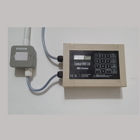Taking control of energy bills

With the various area of industrial and commercial premises having a diverse range of heating requirements, Nikki Goodman of Combat HVAC extols the energy-saving virtues of zoning.
Heating within industrial and commercial premises can account for up to 60% of operating costs, but how can it be reduced? Do you require a new heating system, or could it just be your system controls? Without realising it, you could be wasting a significant amount of energy by not utilising heating controls to operate at maximum efficiency.
Is it just as simple as lowering the temperature of your system?
Reducing temperature set points by just 1 K can reduce energy bills by up to 8% per year, but is this enough?
Heater controls within an industrial environment operate using the same principles, but there are many differences in the way the systems are used.
For example, there is a minimum temperature that is required to be maintained within industrial and commercial premises. Industrial facilities may require various temperatures within the same building, depending on the work that is being carried out. If the work is of heavy duty, then a comfortable working temperature is 11 to 14°C. If the work is of a light to moderate nature, the temperature should be 16 to 19°C. Should the work be sedentary, the temperature should be between 19 and 23°C.
There may be a range of activities taking place, so the temperatures may have to vary throughout the building.
An excellent way to achieve different temperatures in various areas of the building is by utilising zoning to control the temperature of every zone within the building precisely. It would be poor energy management to heat any unoccupied space. Zoning allows heaters to be switched off in any unused space. It is also not appropriate to heat a room with sedentary workers at the same temperature used as an area occupied by heavy workers.
Zoning would be an ideal solution for buildings that have different occupancy patterns, different temperature requirements or have various floors where the floors above are poorly insulated.
Zoning an HVAC system should done in conjunction with an energy-saving controller.
Think of it like this. It is not appropriate for all the lights in the premises to be controlled by one light switch. That approach would mean a significant amount of energy wastage, as empty rooms might be illuminated
Every zone that requires different temperatures should have its own energy-efficient time and temperature controller. Those controllers should be secure with coded entry, ensuring that unauthorised personnel cannot alter the settings.
The controllers are then linked to a building-management system (BMS), a computer-based control system that is a central nerve station that controls the building's internal environment. A BMS can typically control everything from the lighting to the CCTV security systems and even to the fire alarm systems. These systems can also be used to control your HVAC equipment.
One of the main advantages of utilising a BMS is that it assists with the optimising of energy-management strategies and minimising operational costs.
To make a BMS and controller work together, all the relevant times, and temperatures required for each zone should be entered into the BMS.
For example, in the sedentary work area the temperature should be 21°C at 8 a.m. when staff arrive and heating should be turned off at 5 p.m. when they leave.
The storage of materials on site may require a temperature of 10°C to be maintained overnight and over the weekends. Times and temperatures for those days and times would be entered into the BMS, which will tell the controller to fire up the heater.
To maintain the desired temperature during the day, heaters are cycled on and off as required. After 5 p.m. the controller would turn off the heaters until the temperature necessary for the evening and weekends has fallen to what is required.
In conclusion, setting different temperatures and times for each and every zone ensures that energy is not used when and where it is not needed.
Nikki Goodman is marketing manager with Combat HVAC Ltd.







